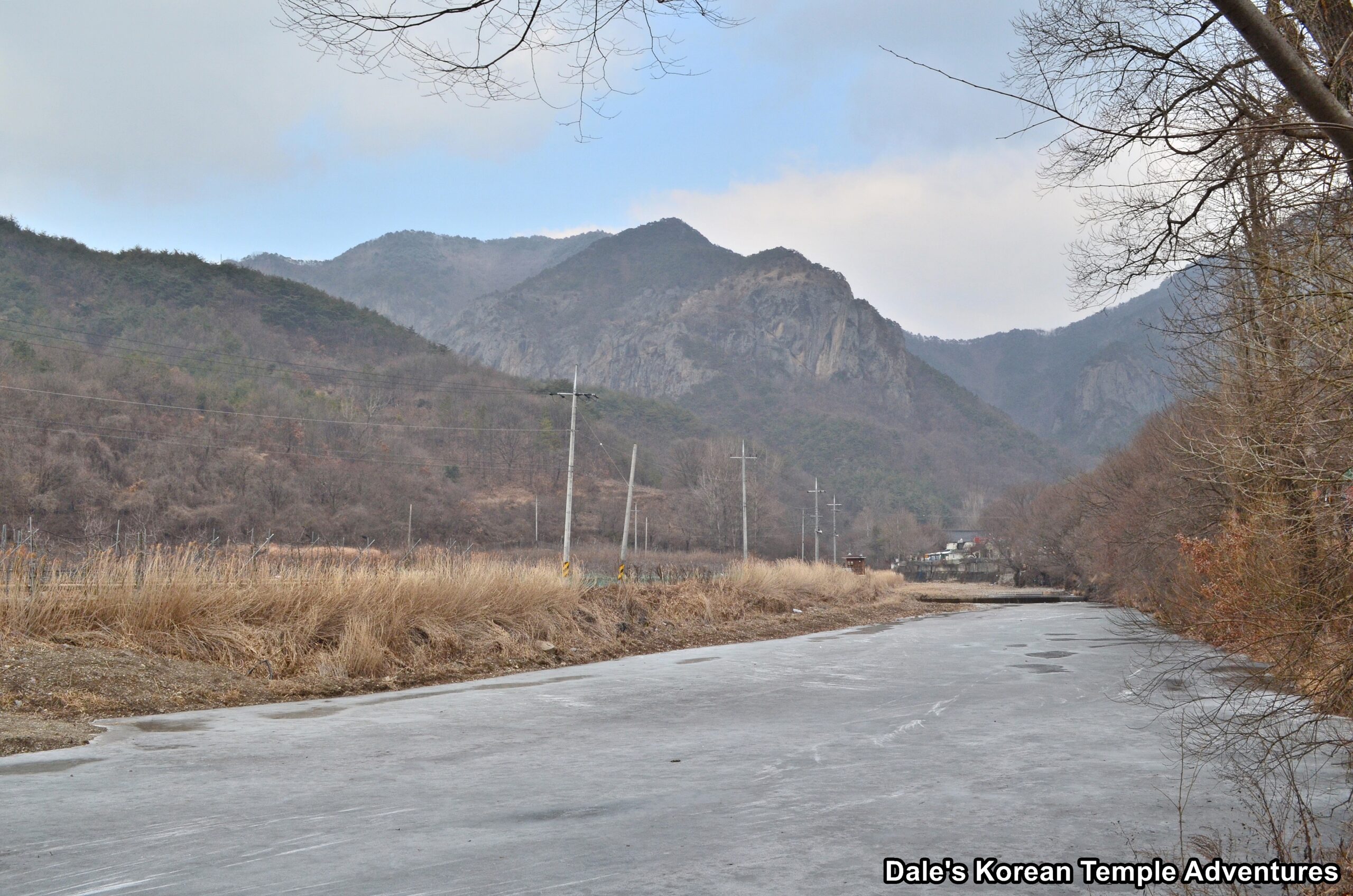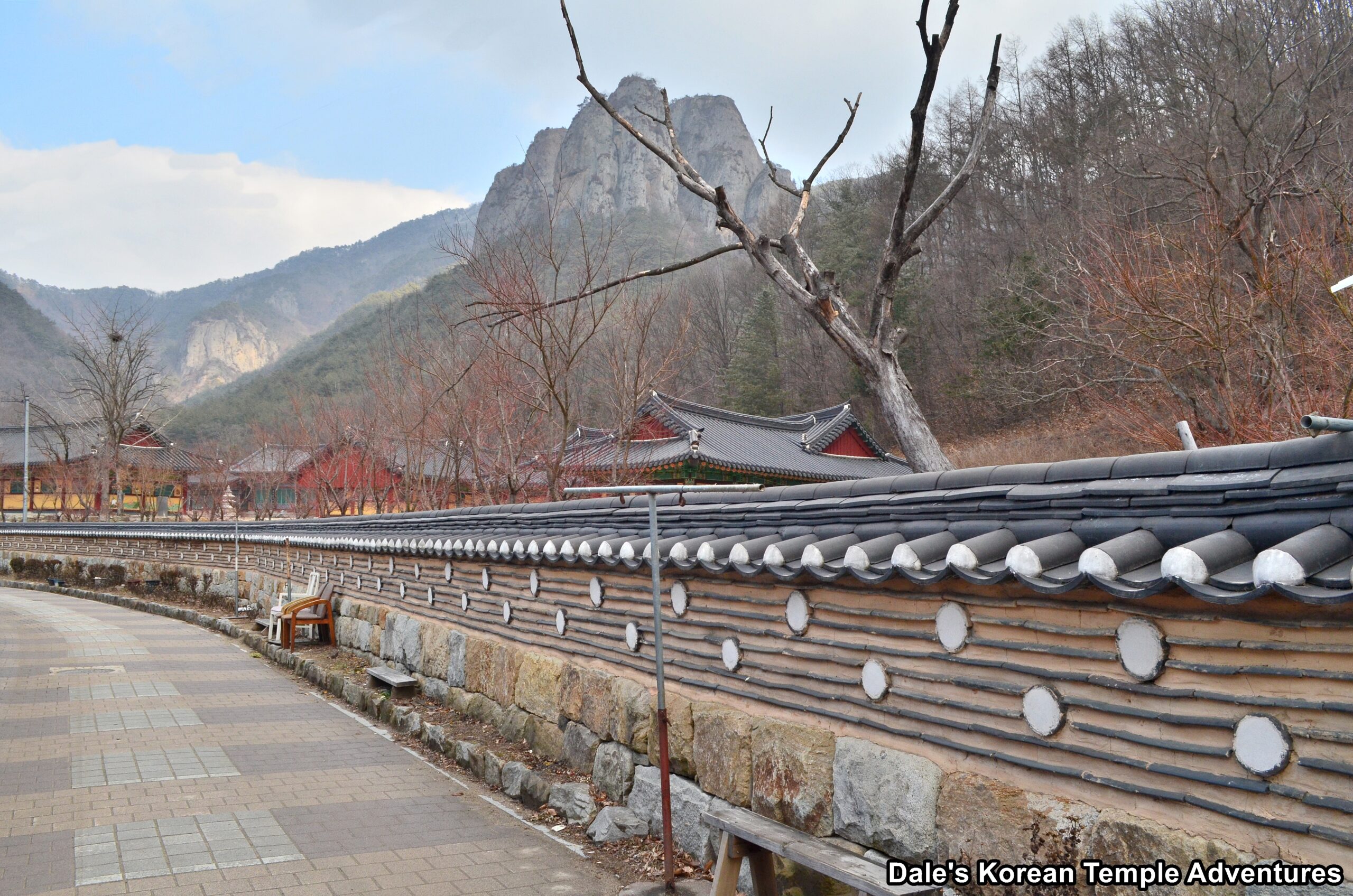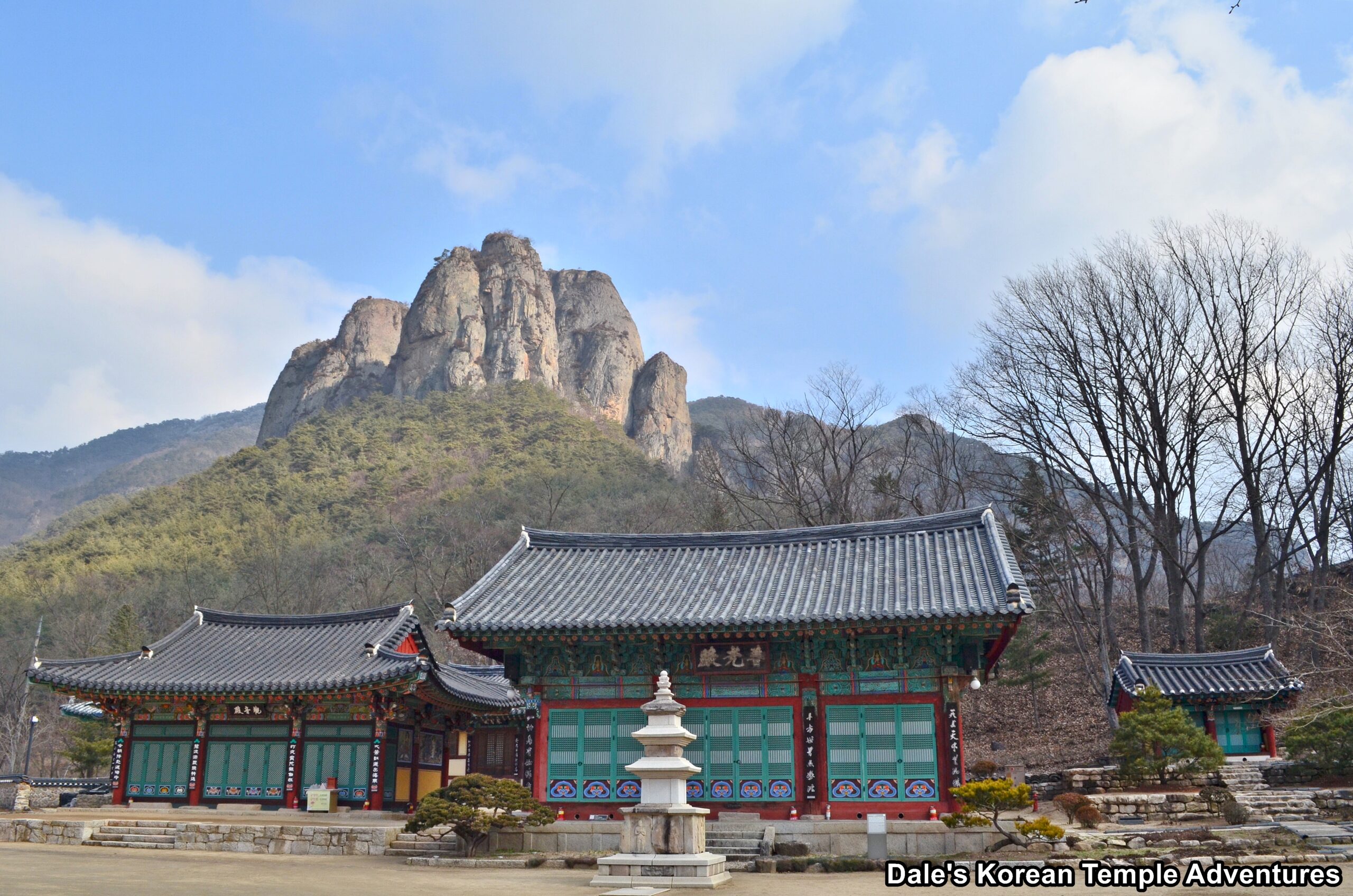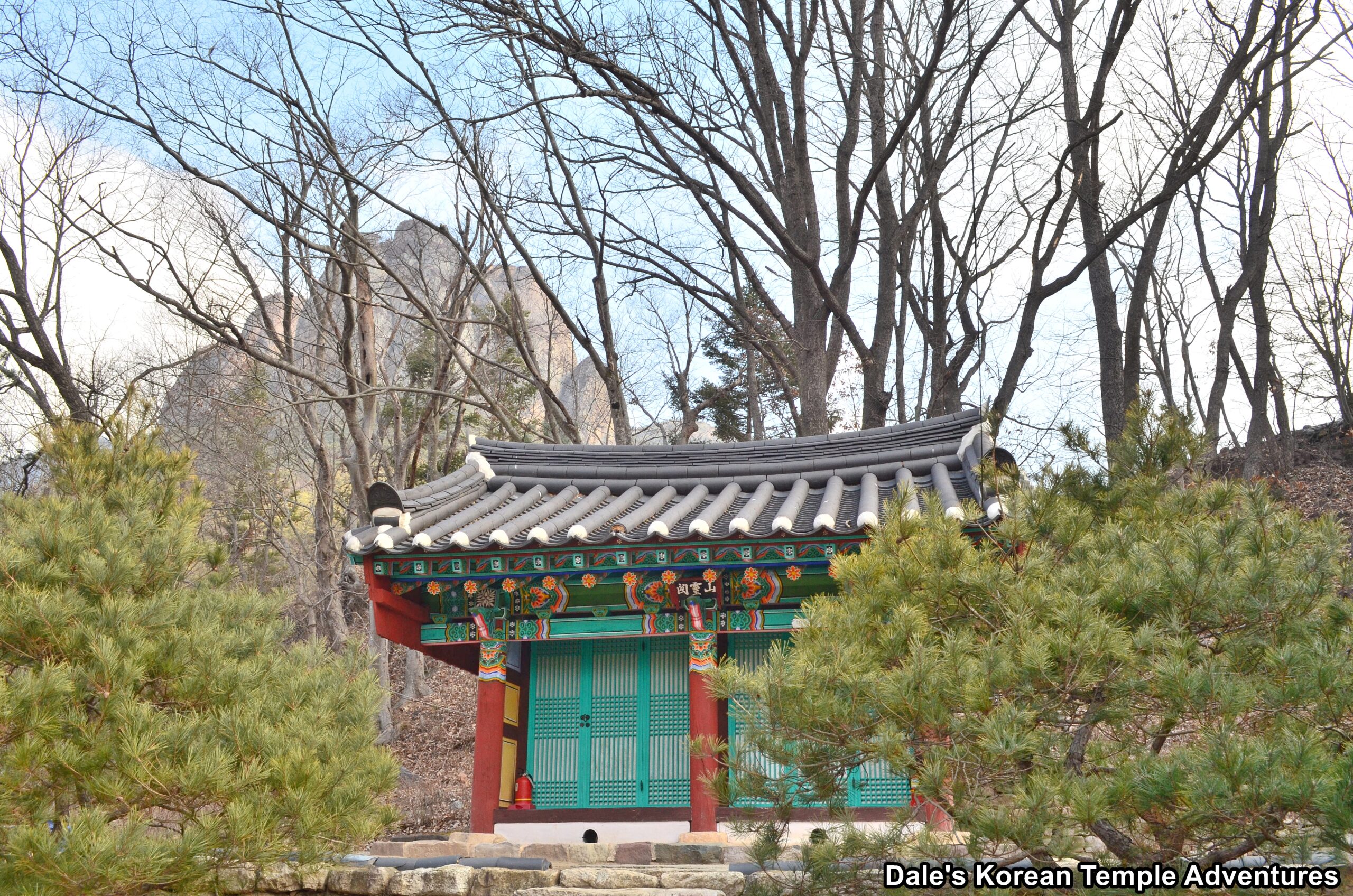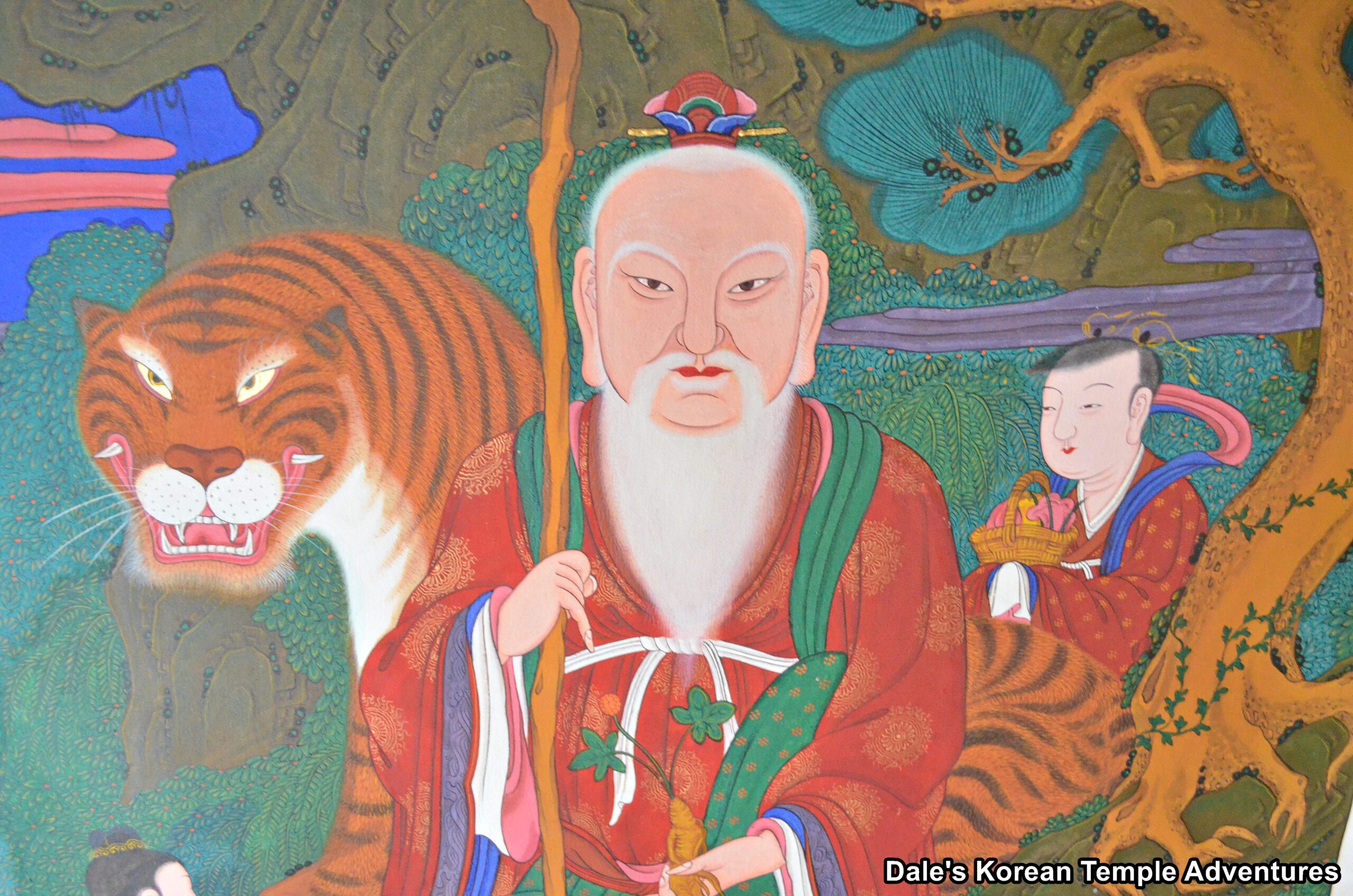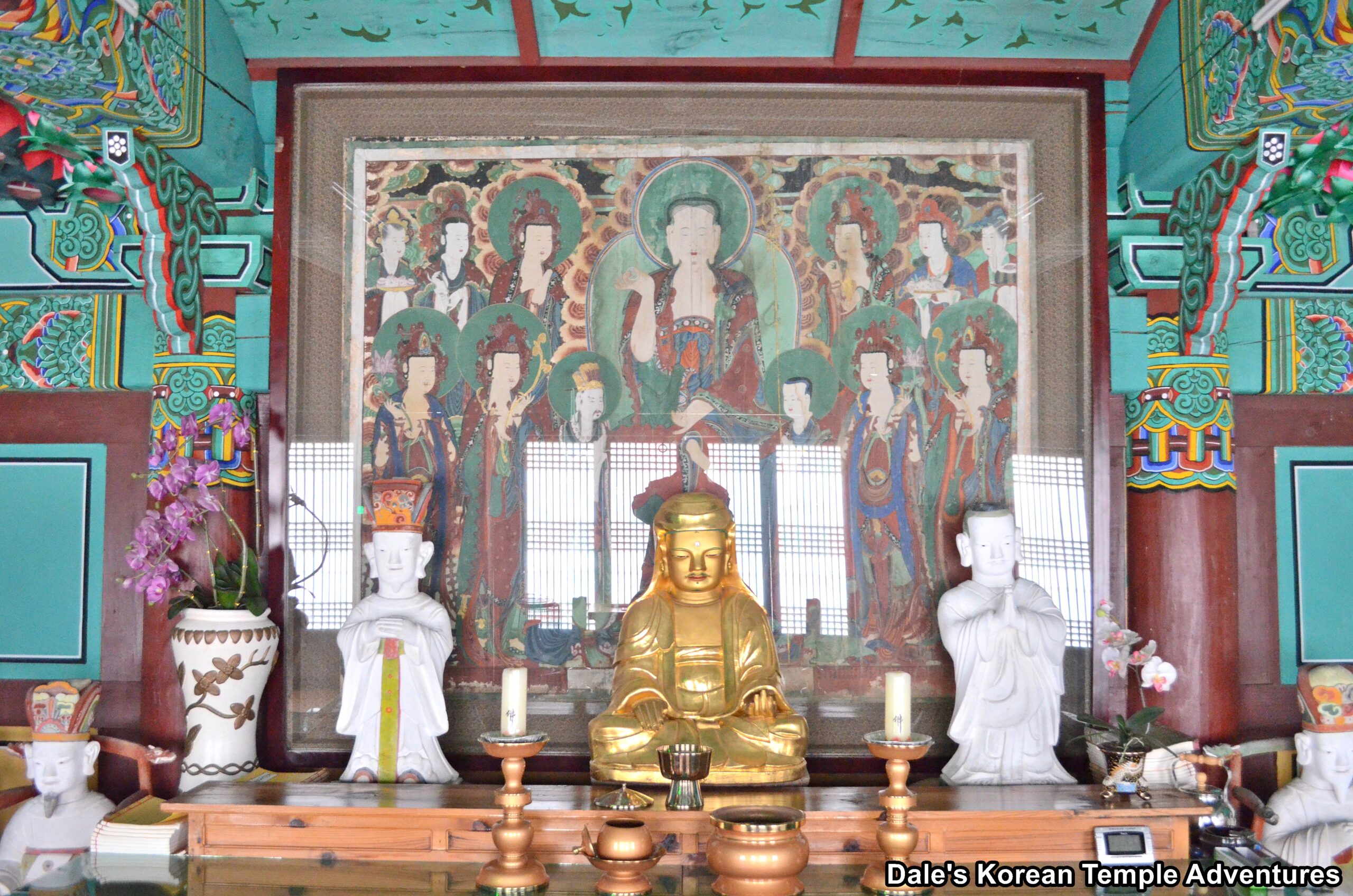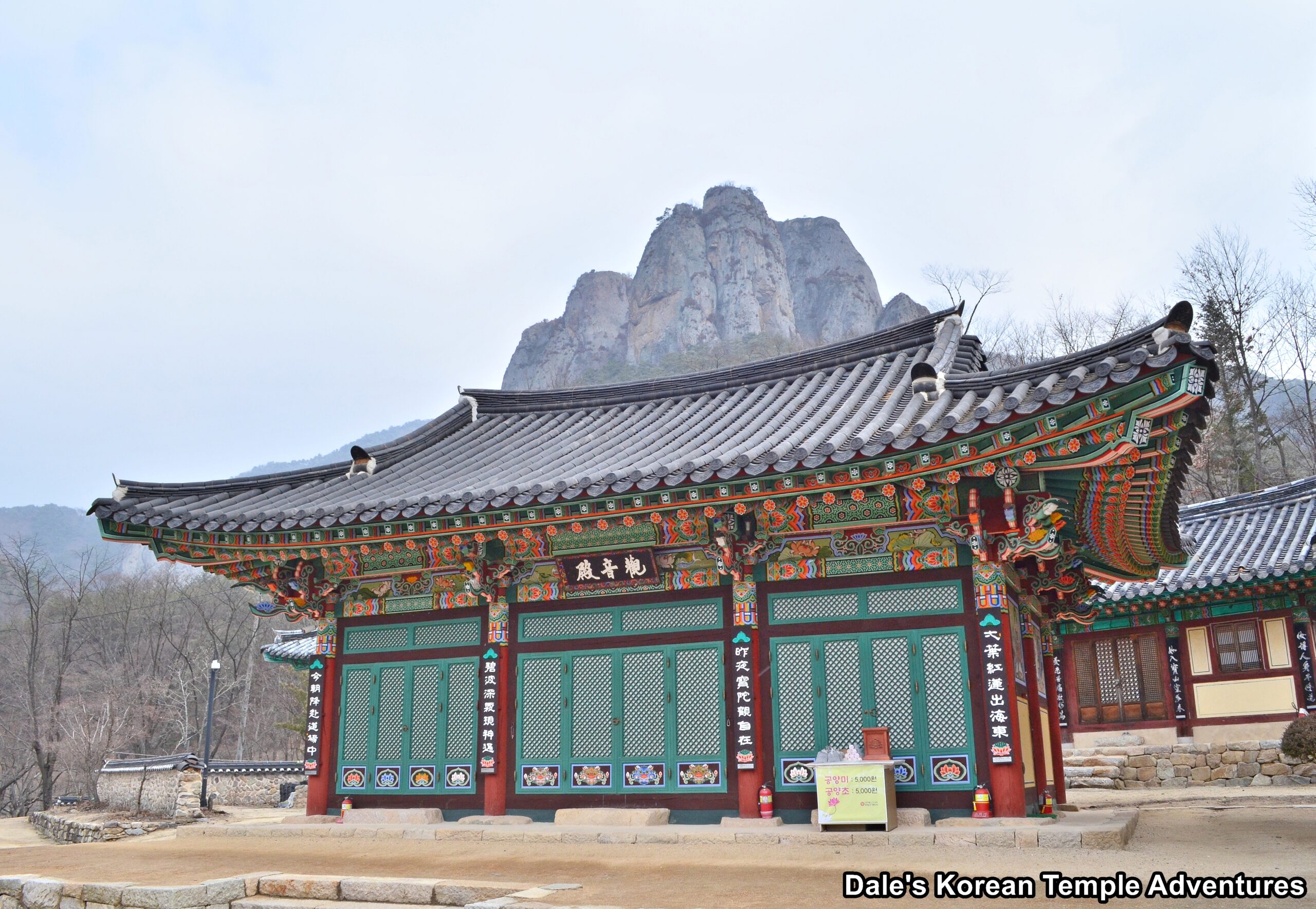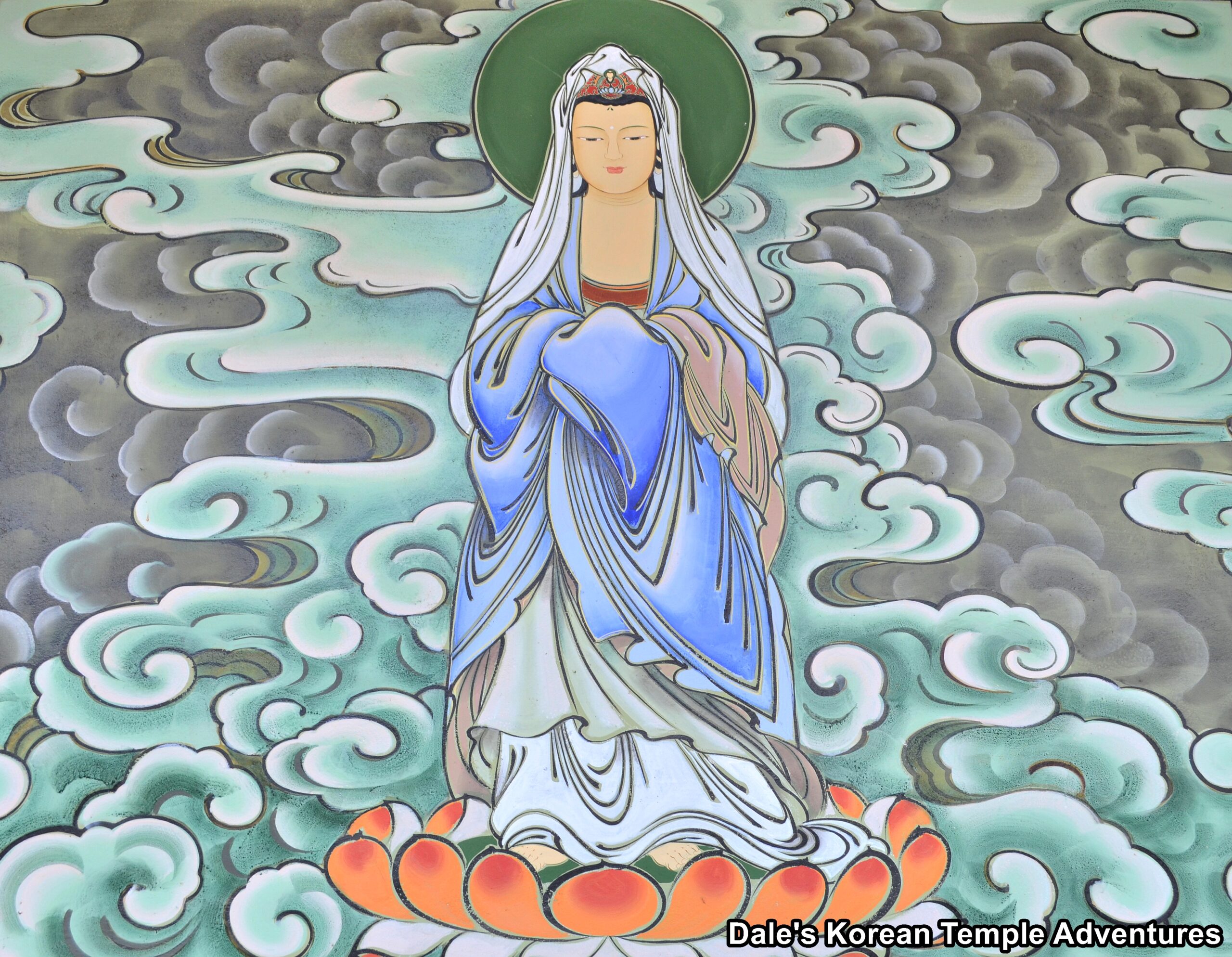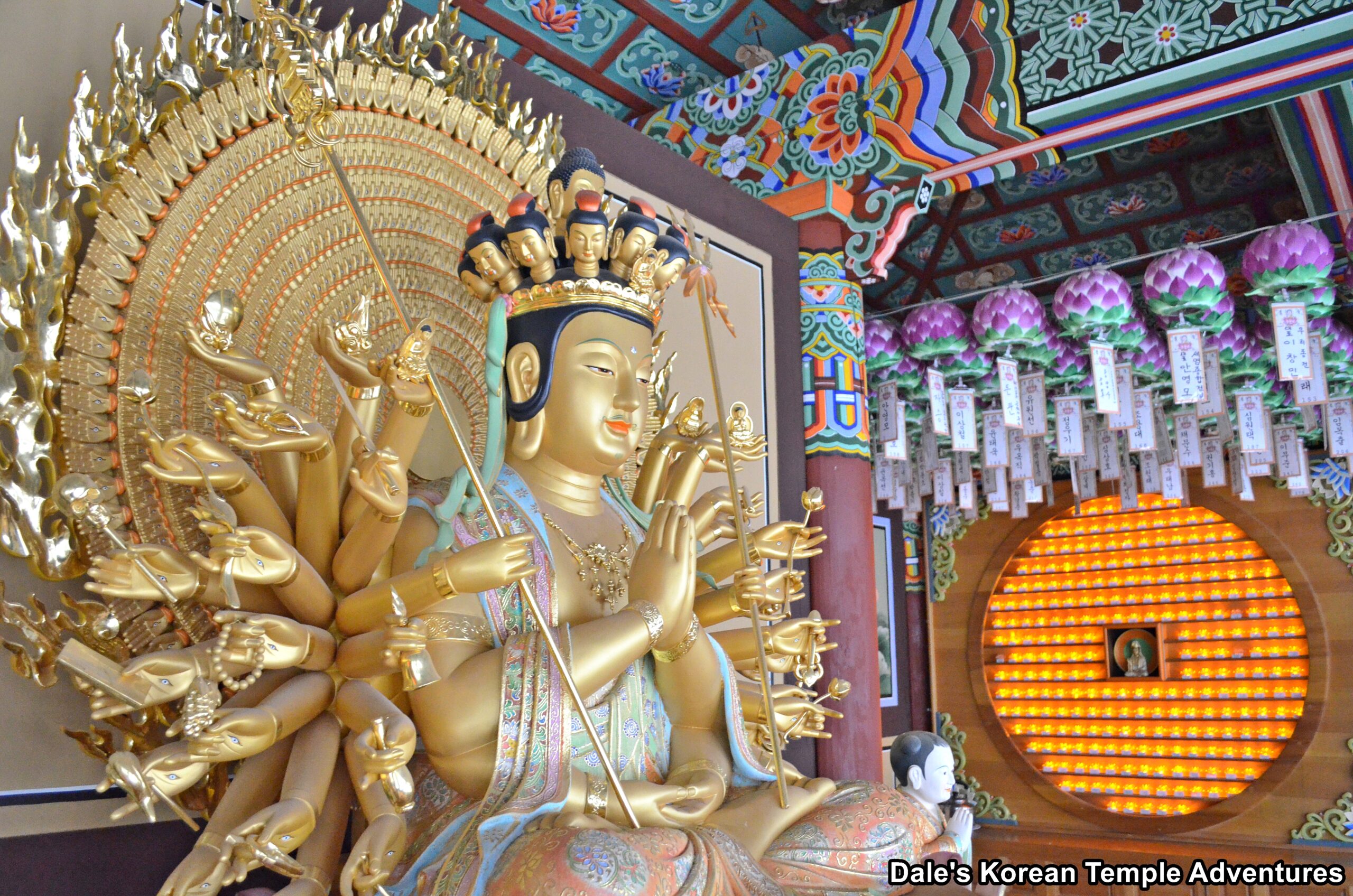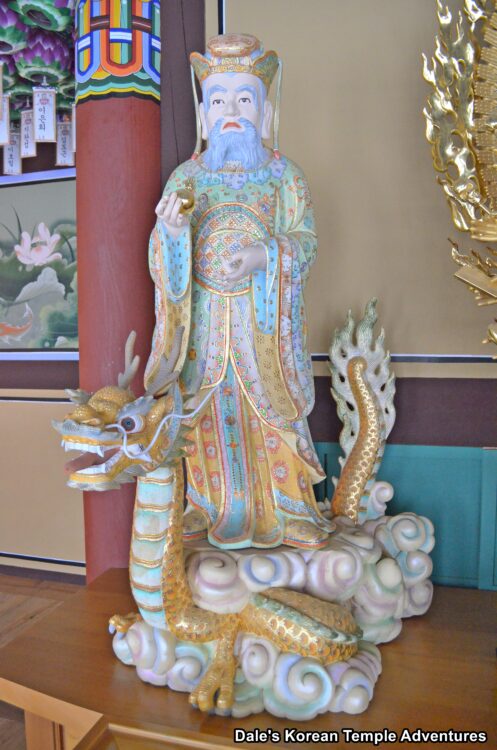Daejeonsa Temple – 대전사 (Cheongsong, Gyeongsangbuk-do)
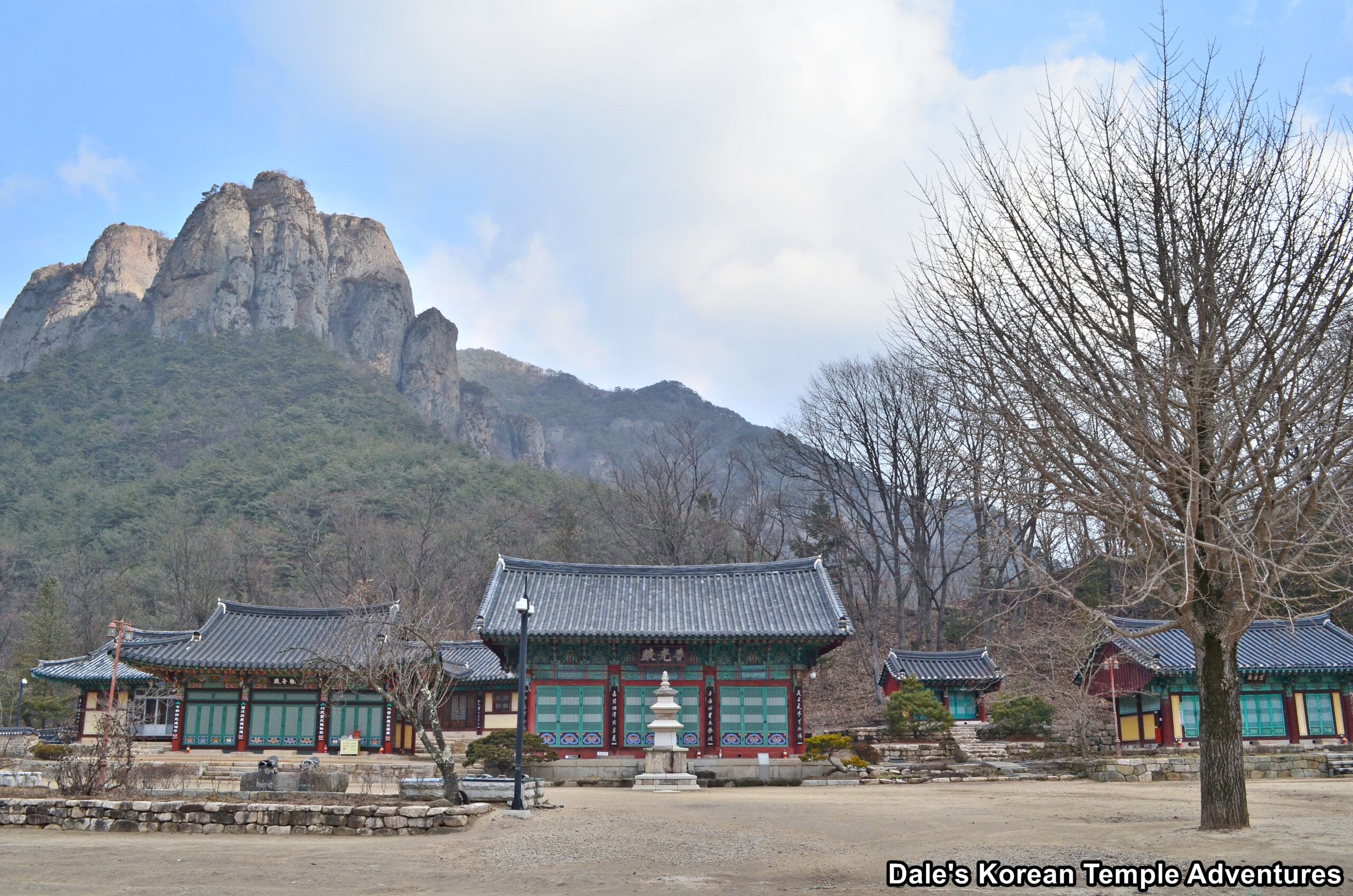
Temple History
Daejeonsa Temple is located in the southwest corner of Juwangsan National Park in Cheongsong, Gyeongsangbuk-do. Juwangsan National Park is the smallest of the national parks in Korea, but it certainly doesn’t lack for beauty with its scenic valleys and rocky mountains. It’s believed that Daejeonsa Temple was first established in 672 A.D. by the famed monk Uisang-daesa (625-702 A.D.). The temple was completely destroyed in 1592 during the Imjin War (1592-1598) by the invading Japanese. The temple was later rebuilt in 1672. Unfortunately, not much is known about the temple’s history from when it was first established in 672 A.D. to when it was later destroyed in 1592. There seems to be a large gap in our knowledge about the temple’s history over a nine hundred year period.
As for the name of the temple, Daejeonsa Temple, it was named after the son of King Ju. According to legend, King Ju was a Tang (618–690, 705–907 A.D.) rebel that retreated to this part of Korea during Unified Silla (668-935 A.D.). It was here that he would hide and eventually die. As for his son, he was Daejeondogun from which the temple gets its name.
Daejeonsa Temple is home to one Korean Treasure, the Bogwang-jeon Hall. This is Korean Treasure #1570. Daejeonsa Temple has two affiliated hermitages nearby. They are Baeknyeongam Hermitage and Juwangam Hermitage.
Temple Layout
After paying your entry fee to Juwangsan National Park, you’ll make your way up to Daejeonsa Temple next to the meandering Jubang-cheon River. Along the way, you’ll pass by a collection of stands selling food and souvenirs. You’ll finally arrive at Daejeonsa Temple, where you’ll have to pay an additional entry fee of 2,800 won to enter the temple grounds.
Straight ahead of you, and framed by the rounded peaks off in the distance, is the Bogwang-jeon Hall. This diminutive main hall is a Korean Treasure. It was first built in 1672 after the original was destroyed in 1592 during the Imjin War. The exterior walls are adorned in simple dancheong colours. Stepping inside the Bogwang-jeon Hall, you’ll find a triad of statues centred by Birojana-bul (The Buddha of Cosmic Energy). Out in front of the Bogwang-jeon Hall is a stout three-story pagoda that has been reconstructed. Around its base are guardians.
To the left of the Bogwang-jeon Hall is the Gwaneum-jeon Hall. The exterior walls to this temple shrine hall are painted with various incarnations of Gwanseeum-bosal (The Bodhisattva of Compassion). Stepping inside the Gwaneum-jeon Hall, and on the main altar, you’ll find a multi-armed and headed image of Gwanseeum-bosal. This statue is joined to the left by an image of Yongwang (The Dragon King). Interestingly, there are two circles with tiny, orange coloured glass lotuses. They are positioned on either side of the main altar image of Gwanseeum-bosal.
And to the right of the Bogwang-jeon Hall are two additional shrine halls. The first, and the smaller of the two, is the uniquely shaped Sanshin-gak Hall. Instead of having Sanshin (The Mountain Spirit) mural facing directly out towards the entrance, the painting is to the far left in an otherwise unoccupied shaman shrine hall. As for the painting itself, it’s newer in composition with a snickering tiger to the left of Sanshin.
The final shrine hall that visitors can explore at Daejeonsa Temple is the Myeongbu-jeon Hall, which is to the right of the Sanshin-gak Hall. Inside the Myeongbu-jeon Hall, and resting on the main altar, is a statue of a golden capped Jijang-bosal (The Bodhisattva of the Afterlife). This statue is then backed by an older mural dedicated to Jijang-bosal, as well. Additionally, Jijang-bosal is joined by the Siwang (The Ten Kings of the Underworld) inside the Myeongbu-jeon Hall.
How To Get There
From the Juwangsan Bus Terminal, you simply need to walk to Daejeonsa Temple. It’s about 800 metres to the temple from the bus terminal.
Overall Rating: 7.5/10
There is just so much natural beauty that surrounds Daejeonsa Temple inside the Juwangsan National Park. In fact, it’s one of the most beautifully located temples in all of Korea. In addition to all this natural beauty, you can also enjoy the historic Bogwang-jeon Hall at Daejeonsa Temple. Other highlights at the temple include the multi-armed and headed image of Gwanseeum-bosal inside the Gwaneum-jeon Hall and the snickering tiger in the Mountain Spirit mural inside the Sanshin-gak Hall.
